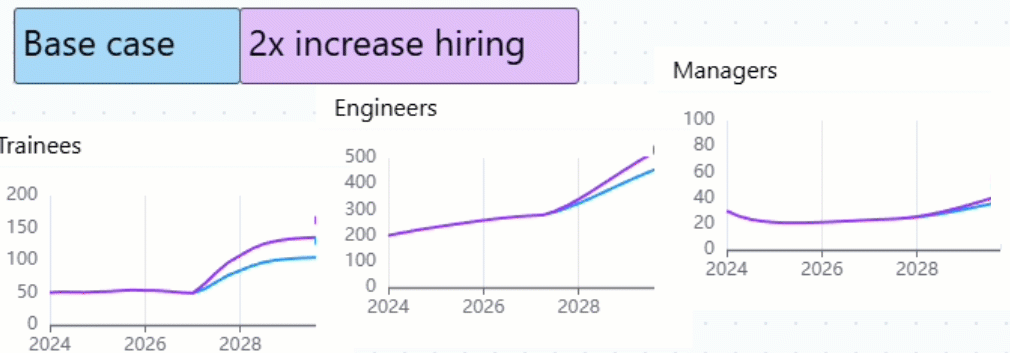Other posts, such as this one, have explained the basics of how business performance depends on building strategic resources, such as customers, staff, products, capacity – and cash of course!
But we have also noted the challenges that arise because we can rarely build those resources in a single step – they develop along ‘pipelines‘ of different states, and managing those pipelines is challenging.
You can learn to build these models in ‘extension’ class 6 of our dynamic business modeling course. (If you are new to these models, there is an option to also get the essentials of how they work and how to build them)
- Over 2 hours of detailed video and slides … including “follow-me” demos for building pipeline models
- Explanations of how those models work, and how you can exploit them
- All four models to keep, copy and adapt for your own use. Course access does not expire, so the class continues to offer a reference resource for you.
What are these pipelines – and why is it so valuable to capture their structure and behaviour?
4 common resource pipelines
Attracting, winning and retaining customers – and other cases where we need to encourage ‘adoption‘ of new behaviours; see this post, and our mini-course on strategic marketing and sales.
Here are 2 scenarios for building a new consumer brand – a hugely costly initiative. Choosing exactly how much effort and cost to commit to the key choices in this pipeline is complex, and highly dependent on exactly how the behaviours captured in the system actually work.
Clik here to view.

Developing staff through hiring, promotion and retention (see this post on people analytics, and our mini-course on strategic human-resource management)
Here are 2 scenarios for building a population of skilled engineers and the managers who supervise their work. Just a small increase in those experienced folk requires a huge increase in trainee numbers – and takes many years to deliver the growth we want. This pipeline too is complex, strategically critical, and highly dependent on exactly how people in the system actually behave.
Clik here to view.

The product development process – consisting of both the physical steps and market testing is another complex process with long time-constants (sorry, no full post on that yet). Here, a business actually achieves a stronger release of great products by choosing to develop fewer of the opportunities that are originally discovered.
Clik here to view.

Managing aging assets – a common problem in utilities, transport, hotels and restaurants, and many manufacturing sectors. In mature industries, smart management of the maintenance and replacement of physical assets can be the critical driver of sustained strategic success.
Here, new management in 2008 went to deliver shareholder value by squeezing maintenance and capital replacement budgets – but at a heavy cost in declining reliability as numbers of degenerating and unreliable assets grew. In 2014, a new team faced the challenge of fixing that problem, though at a huge cost to those same investors’ cash flow [not shown].
Clik here to view.

… but these are not the only cases where ‘aging’ assets matter. Fashion goods ‘age’ fast in retail settings and consumers lose interest, and data, too, is an aging asset that can be critical!
The post Building models of growth ‘pipelines’ for key resources – customers, staff, products and assets. appeared first on Kim Warren on Strategy.